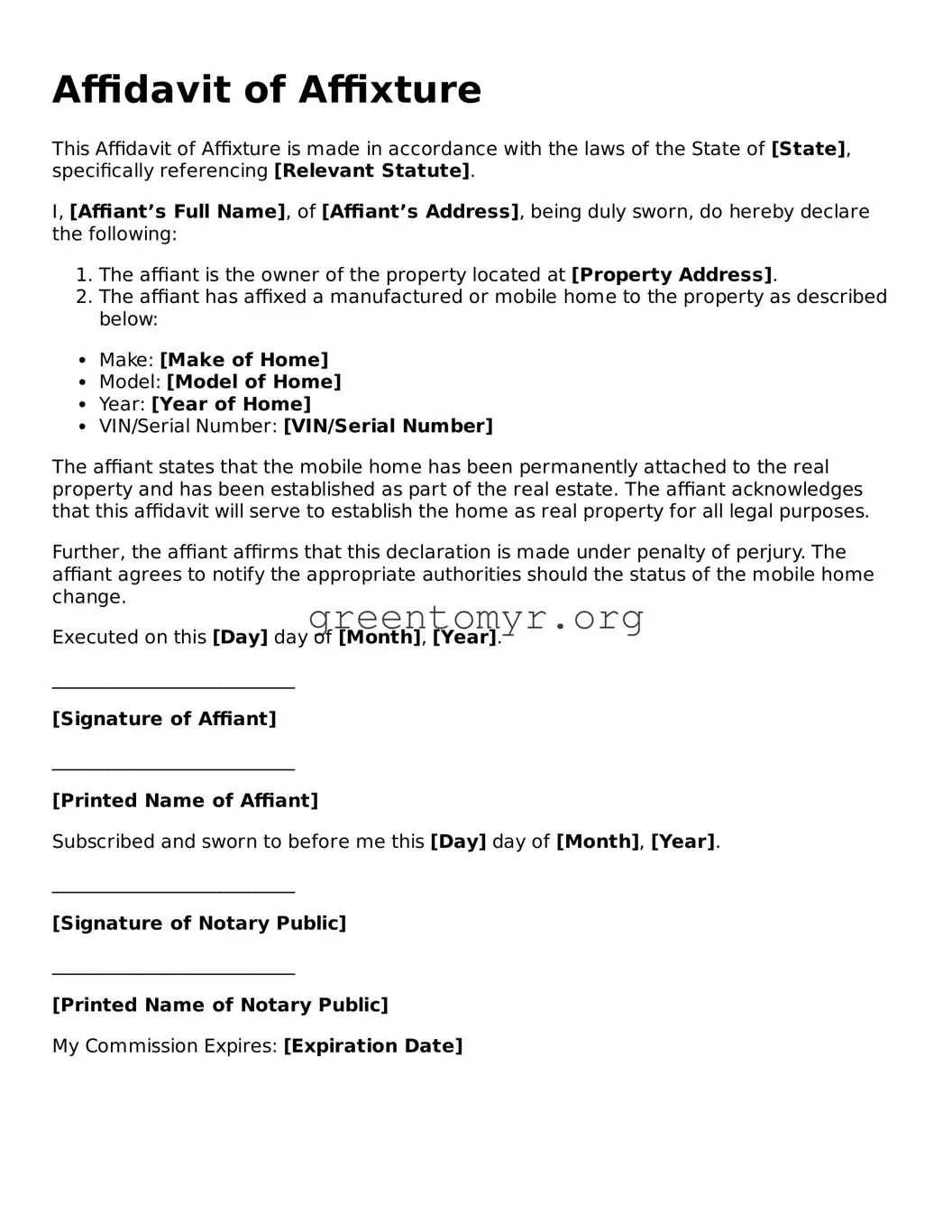Affidavit of Affixture
This Affidavit of Affixture is made in accordance with the laws of the State of [State], specifically referencing [Relevant Statute].
I, [Affiant’s Full Name], of [Affiant’s Address], being duly sworn, do hereby declare the following:
- The affiant is the owner of the property located at [Property Address].
- The affiant has affixed a manufactured or mobile home to the property as described below:
- Make: [Make of Home]
- Model: [Model of Home]
- Year: [Year of Home]
- VIN/Serial Number: [VIN/Serial Number]
The affiant states that the mobile home has been permanently attached to the real property and has been established as part of the real estate. The affiant acknowledges that this affidavit will serve to establish the home as real property for all legal purposes.
Further, the affiant affirms that this declaration is made under penalty of perjury. The affiant agrees to notify the appropriate authorities should the status of the mobile home change.
Executed on this [Day] day of [Month], [Year].
__________________________
[Signature of Affiant]
__________________________
[Printed Name of Affiant]
Subscribed and sworn to before me this [Day] day of [Month], [Year].
__________________________
[Signature of Notary Public]
__________________________
[Printed Name of Notary Public]
My Commission Expires: [Expiration Date]
